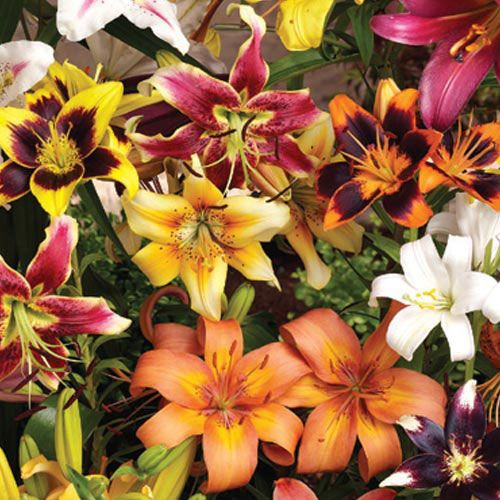Fall has arrived!
I love the fall season. Some gardeners give up after September because they think there’s nothing left to do. It is true that with the cooler weather and holidays upon us, there may not be much time left to enjoy your garden before winter.
But, don’t fret, fellow gardener: There is still time to do some bulb planting! In fact, most flower bulbs have to be planted in the fall, because they need a dormancy period of time to become rooted before they can bloom big and boldly in the spring. Planting bulbs is very simple, and the great thing about ordering from Gurney’s catalog is that we ship our plants and bulbs to you at exactly the right planting time for your region and zone.
Bulbs are usually planted before the first hard frost. In colder northern climates, this will usually be October or early November; in warmer climates, December may be the best month. If Mother Nature isn’t providing your area with cool temperatures, you can do so yourself by prepping your bulbs in the refrigerator for 6-8 weeks. (See our shipping map)
When the time comes, plant your bulbs with the pointy end facing skyward at a depth that is twice as deep as the bulb is tall. When you’re planting just a few bulbs, the easiest way is to dig a series of holes, each hole large enough to accommodate four or five bulbs. If you’re planting en masse, you can either dig a trench (for a nice, long swath of blooms), or get a special gardening awl attachment for your power drill to dig each hole individually.
Bulb needs
After filling the holes, lay 2-3” of mulch (compost, straw, or leaves). Mulch is especially helpful in cold or dry climates because it insulates the soil and maintains even soil moisture. Additionally, mulch inhibits weed growth and prevents soil from splashing onto flowers and foliage during watering or periods of rain.
Typically, bulbs do well in areas with partial to full sun. Soils should be well aerated and well-drained, slightly acidic (pH 6-7), and cultivated to a depth of about 8-12”. I recommend adding decomposed organic material, as this will improve moisture retention.
During their growing or blooming seasons, give your bulbs a deep watering when natural rainfall is less than 1” per week. Most bulbs benefit from a fertilizer such as bonemeal.
And there you have it! For ease of planting and show-stopping color, nothing beats flower bulbs. Click here to see Gurney’s huge selection of flower bulbs!


